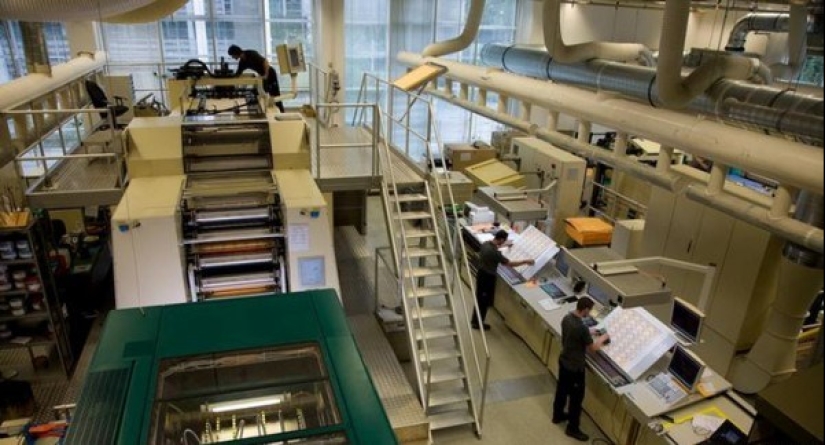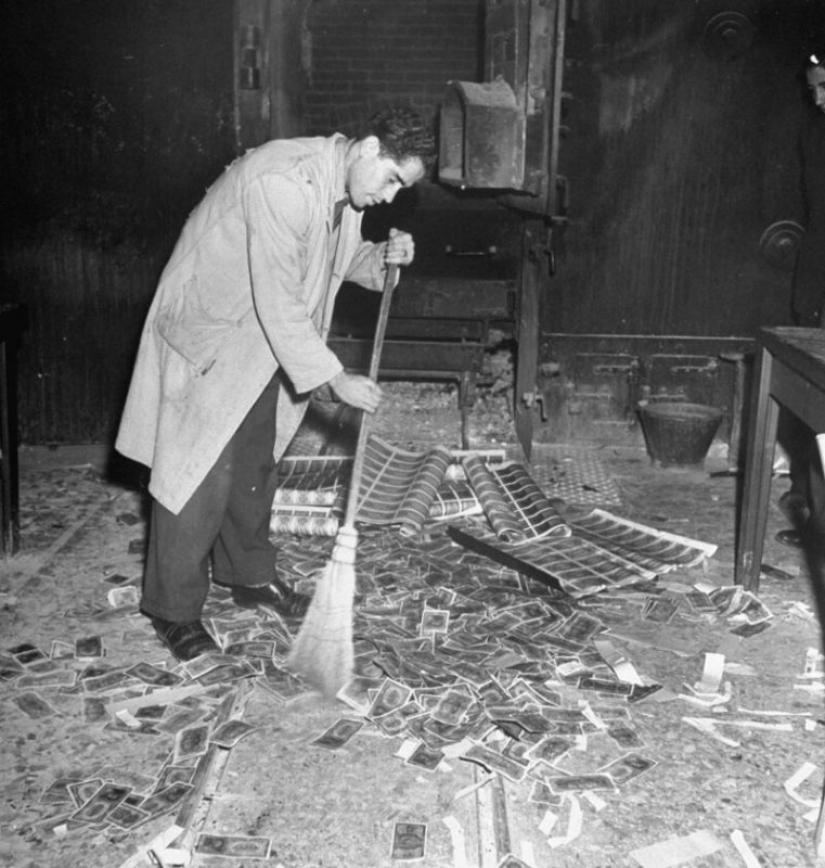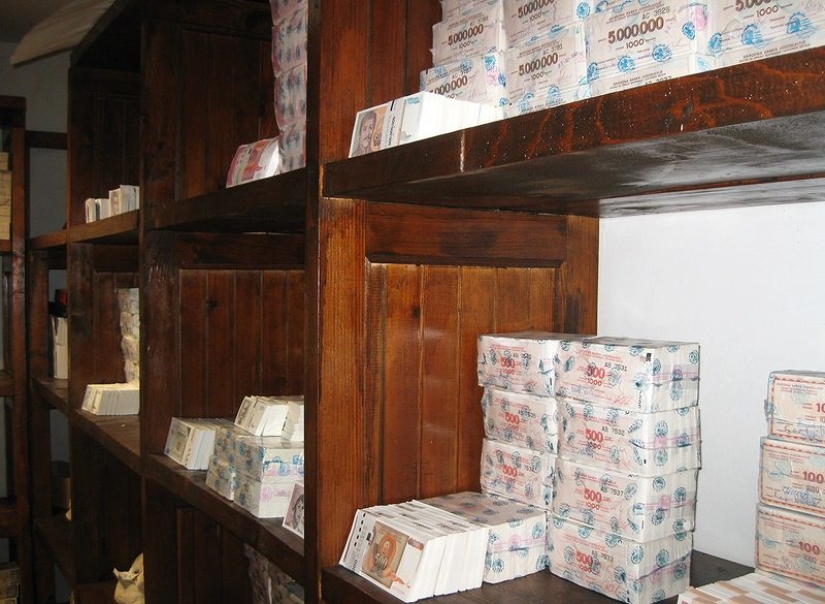Cases of catastrophic hyperinflation that will remain in history
By Pictolic https://pictolic.com/article/cases-of-catastrophic-hyperinflation-that-will-remain-in-history.htmlPeople say that money is just paper. But using this figurative expression, we do not even guess how close we are to the truth. Get acquainted with several cases of lightning inflation that occurred at different times in different countries and make sure that money can cost less than the raw materials used to print them.

Hyperinflation is not a modern economic phenomenon. For the first time, large-scale depreciation of money occurred at the end of the XVIII century, during the French Revolution. Historical sources say about the depreciation of money by 143% per month. Until the beginning of the XX century, this indicator was an absolute world record, but then 17 cases of hyperinflation that occurred in different parts of the world took the dubious palm from the French.

Economics professor Steve Hanke from the American Johns Hopkins University argues that hyperinflation has never been where the payment of goods took place or where banknotes were exchanged directly for products. The depreciation of money occurs only if the money supply circulates without restrictions and is controlled only by standards and rules.
It was not difficult to fight inflation in a society where the exchange of coins for products reigned. In 1124, during the reign of King Henry I, silver coins began to fall in value. This was due to a decrease in the quality of the metal used in coinage.

To avoid an economic crisis, by order of the king, the coiners had their right hands cut off and fired, taking new ones in their place. This helped to stabilize the silver sterling, which was the predecessor of the pound sterling, which appeared at the end of the XII century. Today it is much more difficult to fight inflation, if only because the royal method cannot be used.
Any currency that is not backed by material values is at risk of inflation, but political and social prerequisites are necessary for its rapid development. All the cases of hyperinflation described below are excellent proof that this statement is true.
1. The worst case of hyperinflation was recorded in Greece in October 1944. Prices in the country increased by 2 times every 4 days, and the inflation rate was 13,800% per month. Economic problems were associated with the occupation of the country by the Nazis and lasted for 1.5 years.

If in 1938 the Greeks, on average, kept the drachma for 40 days and only then spent it, then in the autumn of 1944 the money was stored for about 4 hours. If in 1943 the largest banknote in the country's circulation was 25,000 drachmas, then at the end of 1944, banknotes with a nominal value of 100,000,000,000,000 drachmas appeared.
2. After the end of the First World War, hyperinflation of unprecedented strength engulfed Germany. The industry drained of blood by the war, huge debts and obligations to pay reparations made themselves felt. The government began to print stamps en masse in order to exchange them for hard currency and pay off foreign debts, which led to the depreciation of money.

Prices doubled every 3 days, and in October 1923, already under the Weimar Republic, inflation reached an incredible 29,500% per month. As an example of rising prices, the cost of bread can be cited. In January, 250 marks were asked for a loaf of bread in Berlin, and by November 200 billion had to be paid for the same product.
3. In 1992, only Serbia and Montenegro remained from the disintegrated socialist Yugoslavia. Economic and political crises, following one after another, forced the government to turn on printing presses and flood the country with unsecured banknotes.

In the first month of 1994, hyperinflation, fueled by UN sanctions and incredible corruption, amounted to 313 million percent. The few products that the stores could offer doubled the price every 34 hours. Residents of the former Yugoslavia parted with money immediately, without delaying them after receiving, for more than 1-2 hours. Since there was not much to spend on, crowds of people crossed the Hungarian border to purchase basic necessities in a more or less prosperous neighboring country.
4. In the early 90s of the XX century, the African country Zimbabwe became the absolute world record holder for hyperinflation. In 1980, a new monetary unit was introduced in the country — the Zimbabwean dollar, which was arrogantly estimated at 1.25 US dollars. For some time, the exchange rate of this currency was more or less stable, but in 1990, land reform began.

Ethnic Europeans were expelled from the country, and their farms were distributed to indigenous Zimbabweans. The locals did not have a special craving for work in the fields, and gradually the country's economy began to sink. The Zimbabwean dollar was crippled by the war in neighboring Congo in 1998, and the US sanctions imposed in 2002 completely put an end to it.

In 2007, everything was so bad that property owners preferred to take rent from tenants with maize flour and vegetable oil. Toilet paper and sugar, more valuable than a dollar, were also in use. In November 2008, prices doubled every day and at the peak of the crisis, a loaf of bread cost 200 billion Zimbabwean dollars.
5. Hungary faced the most severe and protracted hyperinflation in Europe, which began after the First World War and ended only after the Second. After the collapse of the Austro-Hungarian Empire, a new currency was introduced in the country — the penge. The government hoped to strengthen the economy in this way and pay off foreign debts.

When the desired effect was not obtained, the country's state bank devalued the currency to cover the increasing budget expenditures. By the beginning of the Second World War, money was being printed uncontrollably on a call from the government, which led to their unprecedented depreciation. Prices in the country rose twice every 15 hours, and by July 1946 hyperinflation was 41.9 quadrillion percent. All Hungarian money in circulation was valued at 1/1000 US dollars.
Recent articles

There is hardly a person who is in your life for once would not have heard the comparison is "right as rain". That's just the ...

At all times, masters have created objects with secrets, striking with fine work and complex construction. The first such products ...

The breakfast of the Sun King, Louis XIV, became a real ritual at the Palace of Versailles. This French monarch, known for his love ...